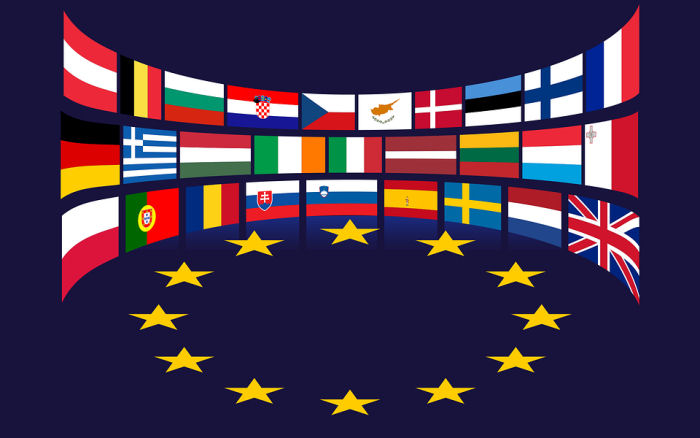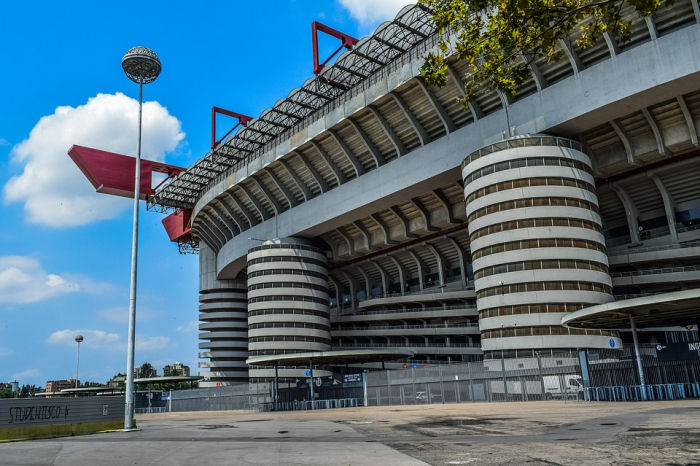 The Nations League features all UEFA countries. Image by GDJ
The Nations League features all UEFA countries. Image by GDJ
When the Nations League was announced it was met with a mixture of incredulity, scorn and even some anger. An already packed calendar of international football, that was already being squeezed into and disrupting the domestic one had just got bigger, even more packed. Very soon however, and despite most people eyeing anything and everything that UEFA proposes with a huge dose of skepticism, people started to see its merit. It is not without its flaws, but it has addressed several of the issues of what was a broken system.
What is the Nations League?
The Nations League began life in 2018 and takes place every two years between the men’s teams that are members of UEFA. The group games of the third incarnation are to be played over the summer of 2022, with the finals taking place in June 2023. The current format consists of four leagues, each comprising four groups of four teams (with the exception of League D which has one group of four, and one of three). The winners of each of the League A groups qualify for the knockout final tournament. There is relegation and promotion between the leagues with the losers and winners of the respective groups going up or down the league system.
What are the Downsides of the Nations League?
Despite the concerns, there are actually very few negatives. One downside is that it eliminates the chances of adding to the
rich history of underdog stories in football, but there is still the Euros and World Cups for that. It has not added to the footballing calendar in the Autumn and Winter, though there are the finals every other year which eats into the top player’s time off (you can decide for yourself if that is a good or bad thing).
There are two major issues that this tournament has addressed and amazingly it has corrected all of them better than anyone could have hoped.
Eliminating Friendlies
One of the huge bugbears of the international calendar was the
number of friendlies. They were a chance for the national teams to get together, the coach to have valuable time with his players, to try out new formations and tactics, but more often than not, they were pitted between teams of very unequal standing. This meant the higher-ranked team was not getting a stern enough test, while the lower-ranked team invariably got well beaten. This resulted in neither team learning anything apart from confirming their place in the sports hierarchy, and the fans being subjected to a non-competitive game. The Nations League has got away with practically all friendlies, apart from those arranged prior to the Euros or World Cup.
Level Playing Field
 The San Siro hosted the 2021 Nations League Final. Image by dimitrisvetsikas1969
The San Siro hosted the 2021 Nations League Final. Image by dimitrisvetsikas1969
The disparity in the levels of teams within Europe is something that is never going to go away.
Teams at the bottom of the tier are constantly playing games in tournament qualifiers where their one aim is to keep the score down to single figures. The Nations League pits those teams against each other. For the first time, they are playing competitive football against teams of their own ability. That is how teams improve and what brings pride back to the nations and their fans.
Likewise, at the other end of the spectrum, teams get to play against the best teams in the world, in a tournament that though means something, is never going to rival the World Cup or Euros. Take England for an example. They consistently breezed through qualifying, only to come unstuck (until recently) when it came to playing the world’s elite teams at the business end of tournaments. They would go perhaps four years in between taking on these nations in a competitive fixture. Now their management team can pit their wits
against the likes of Germany and Italy just a few short months before the World Cup in Qatar.
There is a potential downside to this, one that has a slight tinge of the European Super League, in that if Europe’s top teams play each other too often it may water down the games at the “bigger” tournaments. We will have to wait and see if that becomes an issue, but there is one big difference between the failed Super League, and that is that the Nations League has relegation and promotion, so is far from a closed shop.